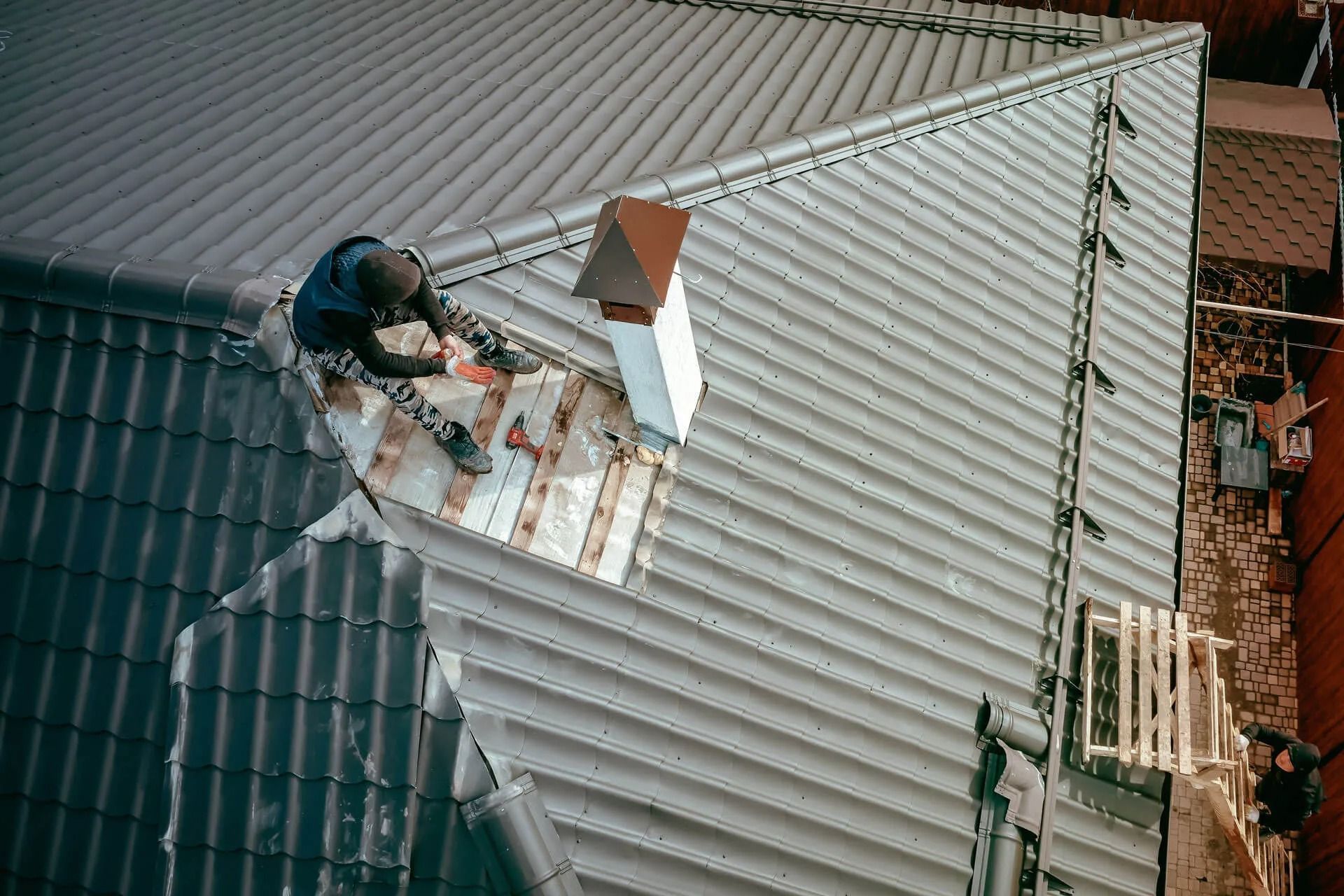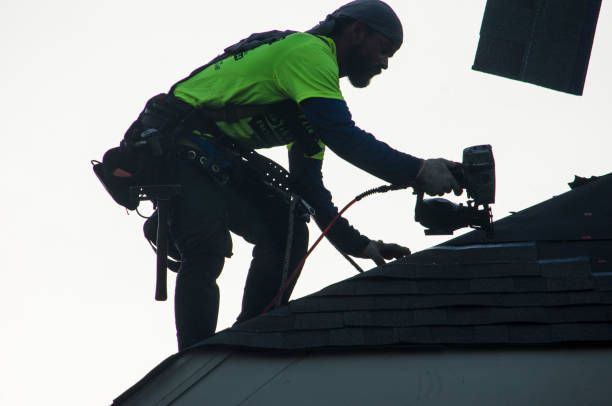The Ultimate Guide to Roofing Installation
Roofing installation is a significant investment in your home, and understanding the process can help you make informed decisions. Whether you’re replacing an old roof or installing a new one, it’s essential to know the materials, methods, and steps involved in getting a roof that’s both durable and energy-efficient. From choosing the right roofing material to understanding the timeline and costs, being prepared for the installation process can ensure a smooth and successful project.
This ultimate guide to roofing installation will walk you through everything you need to know. We’ll cover common roofing materials, the step-by-step installation process, and how to choose the right contractor for the job. Understanding these aspects will not only help you choose the best roofing system for your needs but also ensure that your roof is installed correctly, providing lasting protection and value for your home.

Understanding the Different Types of Roofing Materials
Choosing the right roofing material is a crucial step in the roofing installation process. There are a variety of materials available, each with its own set of benefits. Popular choices include asphalt shingles, metal, slate, and tile, each offering unique advantages in terms of durability, cost, and aesthetics. Asphalt shingles are cost-effective and easy to install, making them a popular choice for homeowners. Metal roofs, on the other hand, are known for their longevity and energy efficiency, while slate and tile offer timeless beauty and exceptional durability.
Understanding the characteristics of each material helps you make an informed decision about which one will work best for your home. Factors such as local climate, aesthetic preferences, and budget will all play a role in determining the best roofing material.
The Importance of Professional Roof Installation
While DIY roofing might seem appealing, professional installation is crucial for ensuring the longevity and functionality of your roof. Roofing contractors are trained to handle the complexities of installation, including the proper placement of materials, insulation, and ventilation. They are also equipped with the necessary tools and expertise to complete the job safely and efficiently. A professional installation ensures that your roof is properly sealed, reducing the risk of leaks and premature wear.
Moreover, professional roof installers are knowledgeable about local building codes and regulations, ensuring that the installation complies with legal standards. This helps to avoid costly fines or issues during future inspections.
The Step-by-Step Process of Roofing Installation
Roofing installation involves several key steps, each of which plays a critical role in ensuring that the roof is installed correctly. The process begins with an inspection of the old roof, followed by the removal of damaged materials. Once the existing roof is removed, the contractor will inspect the decking and make necessary repairs before applying a protective underlayment. This layer helps prevent moisture from seeping into the roof structure.
After the underlayment is in place, the roofing material is applied. Shingles or tiles are carefully placed in rows, ensuring proper overlap and sealing. Once the roof is fully installed, the contractor will inspect the work for any gaps or imperfections before cleaning up the site.
How to Choose the Right Roofing Contractor for Your Home
Selecting the right roofing contractor is essential to ensuring a successful installation. It’s important to do your research and hire a licensed, insured, and experienced professional who specializes in roofing installations. Start by asking for recommendations from friends, family, or neighbors who have recently had their roofs replaced. Online reviews and ratings can also provide valuable insights into the contractor’s reputation and quality of work.
Once you’ve narrowed down your options, be sure to get multiple quotes from contractors and ask about their experience with your chosen roofing material. A reliable contractor will provide a detailed estimate, timeline, and guarantee of their work. Checking references and reviewing their previous projects will give you a clearer idea of their capabilities..
Preparing Your Home for a Roof Installation Project
Proper preparation is key to ensuring that the roofing installation process goes smoothly. Start by clearing the area around your home, including removing vehicles, patio furniture, and outdoor decorations. The roofing installation team will need ample space to work and may require access to the entire perimeter of your home. Additionally, it’s important to secure fragile items inside the home, as roofing work can create vibrations and noise that may cause objects to fall.
Notifying your neighbors about the upcoming installation is also a good idea, as it may cause temporary disruptions, including noise and debris.
How Long Does Roofing Installation Take
The duration of roofing installation depends on various factors, including the size of your roof, the complexity of the design, and the type of materials being used. On average, roofing installation can take anywhere from one to several days. For smaller homes, the process may take just a day or two, while larger homes or more complex roofs can take up to a week or longer. Weather conditions also play a role, as rainy or windy days may cause delays.
It’s important to have a clear timeline from your roofing contractor so that you can plan accordingly. During the installation process, the contractor will typically provide updates and inform you of any potential delays.
Understanding the Cost of Roofing Installation
The cost of roofing installation can vary significantly based on several factors, such as the type of roofing material, the size of your roof, and the complexity of the installation process. Asphalt shingles tend to be more affordable, while materials like slate, tile, and metal roofing come at a higher price due to their durability and aesthetic appeal. Additional costs may also include labor, disposal of old roofing materials, and any necessary repairs to the roof deck.
It’s important to get multiple estimates from contractors to ensure that you’re receiving a fair price. When comparing quotes, be sure to evaluate the quality of materials, the experience of the contractor, and the level of service included.
What to Expect After Your Roof Installation Is Complete
Once your roof installation is complete, there are a few steps to ensure that everything has been done correctly. First, the roofing contractor will conduct a final inspection to check for any gaps, leaks, or mistakes that may need to be addressed. You should also inspect the work to ensure that the roofing materials have been applied correctly and that no debris is left behind. If there are any issues, be sure to address them immediately with your contractor.
Additionally, your contractor will provide you with maintenance recommendations to help extend the life of your new roof. Regular inspections and upkeep will ensure that your roof remains in good condition for many years.
How to Maintain Your New Roof After Installation
Once your new roof is installed, regular maintenance is essential to ensure its longevity. Keeping your roof clean, inspecting it for damage after storms, and clearing gutters regularly can help prevent issues such as water damage, mold, and premature wear. Scheduling annual inspections with a professional roofing contractor will help identify any small problems before they become major repairs.
Proper attic ventilation is also critical in maintaining the health of your roof. Without adequate airflow, moisture can build up in the attic, leading to the deterioration of roofing materials and even mold growth.
How Weather Conditions Affect Your Roofing Installation
Weather conditions play a significant role in the roofing installation process. Ideal weather for roof installation includes mild temperatures and dry conditions, as wet or windy weather can delay the project or compromise the quality of the installation. In extreme temperatures, either too hot or too cold, roofing materials may not adhere properly, leading to issues down the road.
Before starting the installation, discuss the forecasted weather with your contractor to ensure that there are no anticipated delays. If weather conditions are unfavorable, it may be necessary to postpone the installation until conditions improve.
Conclusion
Understanding the roofing installation process is essential for making an informed decision when it comes time to replace or install a new roof. From choosing the right materials to hiring the right contractor, each step plays a critical role in ensuring that your roof performs at its best for years to come. By following the steps outlined in this guide, you can ensure that your installation project goes smoothly, helping you avoid unnecessary costs and repairs down the line.
At Spring Valley Roofing, we’re committed to providing top-quality roofing solutions that meet your needs and budget. Our experienced team is here to guide you through the roofing installation process, from selecting the right materials to final inspections. Whether you're installing a new roof or replacing an old one, we can help ensure that the job is done right. For more information or to schedule your roofing consultation, contact us today at (610) 948-5207 or visit us at 2 W. Market St., West Chester, PA 19382. Let us protect your home with expert roofing services.



